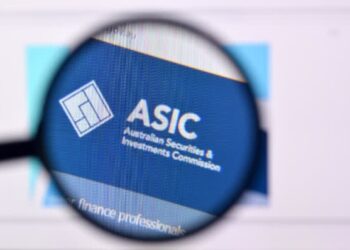An independent expert should review the methodology used by the Australian Financial Complaints Authority (AFCA) to determine compensation amounts for the Dixon Advisory complaints, according to the Stockbrokers and Investment Advisers Association (SIAA).
In its submission to the Compensation Scheme of Last Resort (CSLR) post-implementation review, the SIAA said the scheme is “utterly unsustainable without a significant redesign of the scheme and changes to the way in which AFCA operates”.
The SIAA argued that it is inappropriate that more than “just capital losses that flow through to the CSLR”, referring to AFCA’s long-standing use of the “but for” test in calculating client losses.
AFCA lead ombudsman investments and advice, Shail Singh, has previously defended the complaints authority’s use of the “but for” approach, noting the standard has held up in court dating back to its predecessor scheme the Financial Ombudsman Service.
“What a ‘but for’ test means is but for the failing of the adviser, where would the consumer have been invested? It’s not about theoretical losses; it’s not about opportunity costs. It’s about direct loss that arose from the failings of the adviser,” Singh said last year.
“But that’s what it looks like. It looks like opportunity cost, it does.”
Speaking at a media briefing during the FAAA Congress, Abood said that while AFCA’s methodology is not new, how it interacts with the CSLR is.
“I think, certainly from our perspective, it seems completely unfair, but also obviously unsustainable,” she said.
“That a compensation scheme of last resort should be paying, basically an income guarantee to those clients. So, the floor is not you’ve lost money. The floor is maybe you could have done a bit better in the Vanguard balanced fund, so here’s $150,000, and that’s where the anger is.”
However, the SIAA’s concerns around AFCA’s methodology go much further than just the “but for” test, arguing that there are a range of issues with the complaints authority’s lead decision related to Dixon Advisory.
“We have serious concerns about the way in which the ‘but for’ method has been used in this case and the qualifications AFCA decision makers have to make decisions involving a potential $135 million in claims which will have a significant impact on the financial services industry,” the SIAA said.
“It is important to note that the method of calculating client losses adopted by the expert appointed by the Dixon Advisory administrator in the deed of company arrangement and endorsed by the Federal Court was to determine only the capital losses incurred in holding investments in the URF [US Masters Residential Property Fund]. In other words, the losses were calculated as capital investment in URF less URF distributions less value of URF at administrator appointment date.”
According to the SIAA, this is not reflected in the lead decision, with AFCA applying the “but for” calculation to the entire portfolio, rather than simply the URF component.
This, it said, suggests AFCA has “deemed the entire portfolio to be inappropriate rather than the URF which appears to be the basis of the complaint”.
In the lead decision, the complaints authority said 14 per cent of the clients’ portfolio was invested in the URF.
“We would expect a ‘but for’ calculation on the URF only would result in a significantly lower loss calculation compared to a whole of portfolio approach,” the submission said.
“AFCA has not provided an explanation as to why each investment in the portfolio should not have been held by the complainant and was not in line with their objectives based on the information readily available at the time, except to say they were related party products.
“AFCA has also not provided an explanation or evidence to support its finding that the fees charged on the related products were excessive without reference to comparable products.”
The SIAA argued that the approach represents a “dangerous precedent”, essentially tainting an entire portfolio if a single related party product does not perform.
“We have even greater concerns about the way in which AFCA will deal with future matters when one considers the limitations of the AFCA scheme that SIAA has highlighted since its formation,” it added.
Given the Dixon lead decision is essentially a framework for all subsequent cases, the SIAA recommended that an independent expert with relevant qualifications should be brought in to review the methodology for the calculation of losses.
“We suggested that the independent expert could be an asset consultant as they sit outside the system of financial advice, AFCA and CSLR, but have expertise in investments and markets. Such vetting of the lead case calculation methodology will increase confidence in the AFCA determination and, in turn, its impact on the CSLR and its levies,” it said.
Similarly, with the collapse of United Global Capital set to make up the bulk of the CSLR levy in the upcoming financial year – $44.57 million compared with $12.25 million for Dixon – the association said this “highlights the importance” of its recommendations.
“We recommend that an independent expert be brought in as a matter of urgency to review the methodology that will be used to assess and determine the United Global Capital complaints,” the SIAA added.




How about the culptits responsible for the CSLR claims relating to Dixon Advisory be made to pay from the personal wealth that they generated from their unethical behaviour. A simple look at their personal assets in Greg Norman designed golf courses etc will reveal where the money has gone. Look no further than David Evans and Alan Dixon.